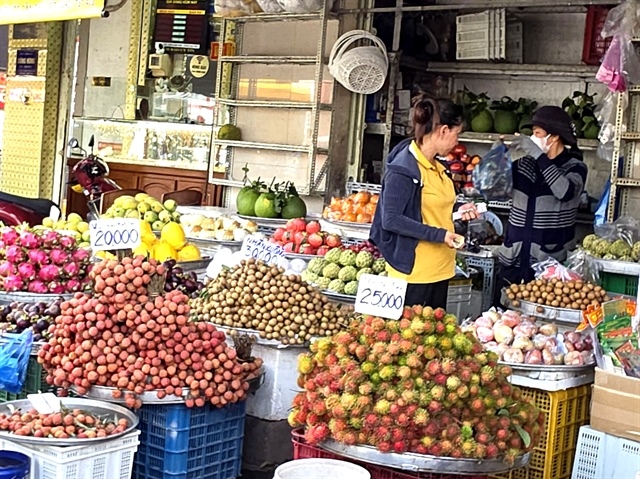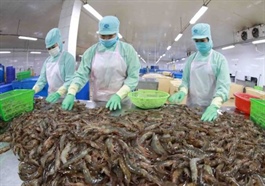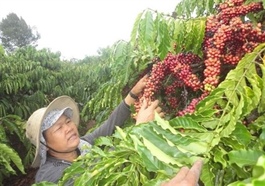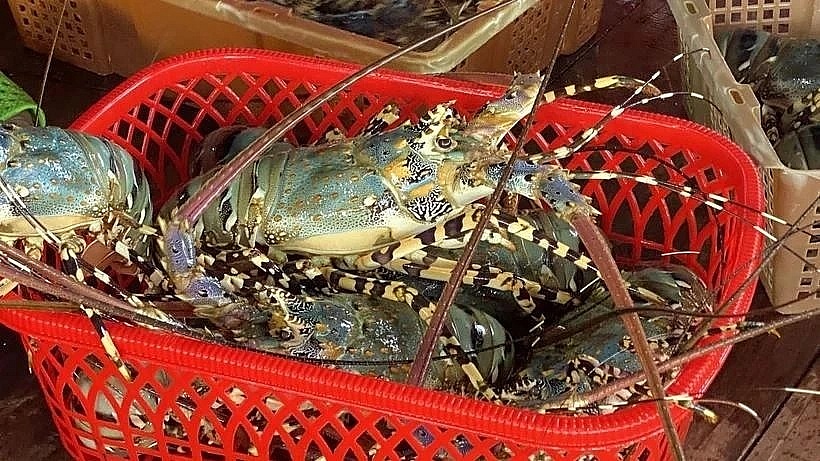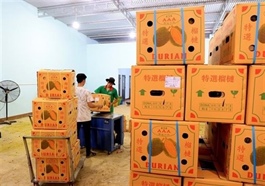Vietnam's tuna takes Spain by storm
Vietnam's tuna takes Spain by storm
Tuna exports from Vietnam have surged dramatically in the first half of this year, particularly to the Spanish market, according to the most recent report from the Vietnam Association of Seafood Exporters and Producers (VASEP).

In recent months, Vietnamese tuna have been shipped to Spain in large quantities. Photo: T.D. / Tuoi Tre |
In May, tuna exports surged 182 percent compared to the same month last year, reaching a total of US$1.8 million, significantly surpassing the figures from 2022, according to the VASEP report.
The most often exported tuna items are flesh, frozen tuna loin (the thickest section of the tuna fish, located along its back), and frozen steaming tuna.
"If South Korea was the country that imported the most Vietnamese tuna at the beginning of last year, Spain now holds that position," stated a seafood exporter from the south-central province of Binh Dinh.
According to the enterprise's explanation, Spain's inconsistent tuna fish catch because of reduced fishing resources is forcing the European country to import more tuna from other countries, particularly Vietnam.
Furthermore, Vietnamese businesses can directly purchase tuna as raw materials from foreign fishing ships on international high seas, allowing them to lower the costs of their final products. This competitive edge is attractive to the Spanish market as well.
"This is a decisive factor in global competitive capability in the tuna industry, and not many countries can do as well as Vietnam," a spokesperson from the seafood exporter told Tuoi Tre (Youth) newspaper.
However, according to the spokesperson, when entering the Spanish market, Vietnamese tuna will face stiff competition from tuna imported from Ecuador, China, and the Philippines.
"The countries have an advantage over us in terms of fishing fleets, as well as raw material supply sources. However, Vietnam is the most preferred destination for tuna provision due to our production capability and technology," said the spokesperson, adding that Vietnam's simple and flexible policy for importing raw materials in the tuna industry is another attractive feature to major suppliers.
Pham Thanh Nam, from an intermediary firm specializing in procuring seafood for export in the northern coastal city of Hai Phong, stated that Vietnam's tuna processing facilities utilize cutting-edge technology and equipment, along with extensive sales expertise and skills.
Nam underscored that the raw material market is crucial to the development of the tuna sector, a field in which Vietnam is increasingly active.
"The supply chain of tuna materials in the Southeast Asian region has transitioned to Vietnam instead of just to Thailand like in the past," he said.
"So, it would be understandable for Spain or any other countries to import much more tuna from Vietnam."
VASEP reported that Vietnam's overall tuna export value exceeded $1 billion for the first time in 2022.
Ten years ago, Vietnam ranked eighth among the world's tuna-exporting countries. By 2023, it had risen to the fifth-largest exporter by value, following Thailand, Ecuador, Spain, and China.
According to the Ministry of Agriculture and Rural Development, the total value of seafood exports in the first six months of 2024 surpassed $4.4 billion, an increase of over seven percent year-on-year.
The seafood export sector experienced notable growth in the first half of the year, including an almost-25-percent increase in tuna export value, reaching $477 million.
Vietnamese tuna exports to Spain fluctuated frequently. However, except for January-February 2024, the situation has improved, with steady increases since March.
The cumulative value of tuna exports for the first five months of this year exceeded $5 million, a 32-percent rise over the previous year.





